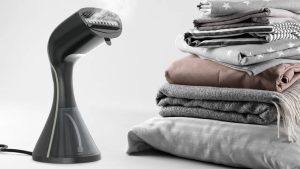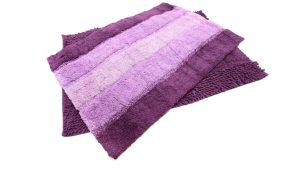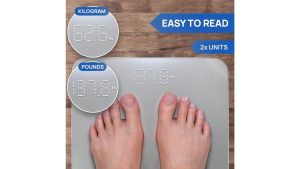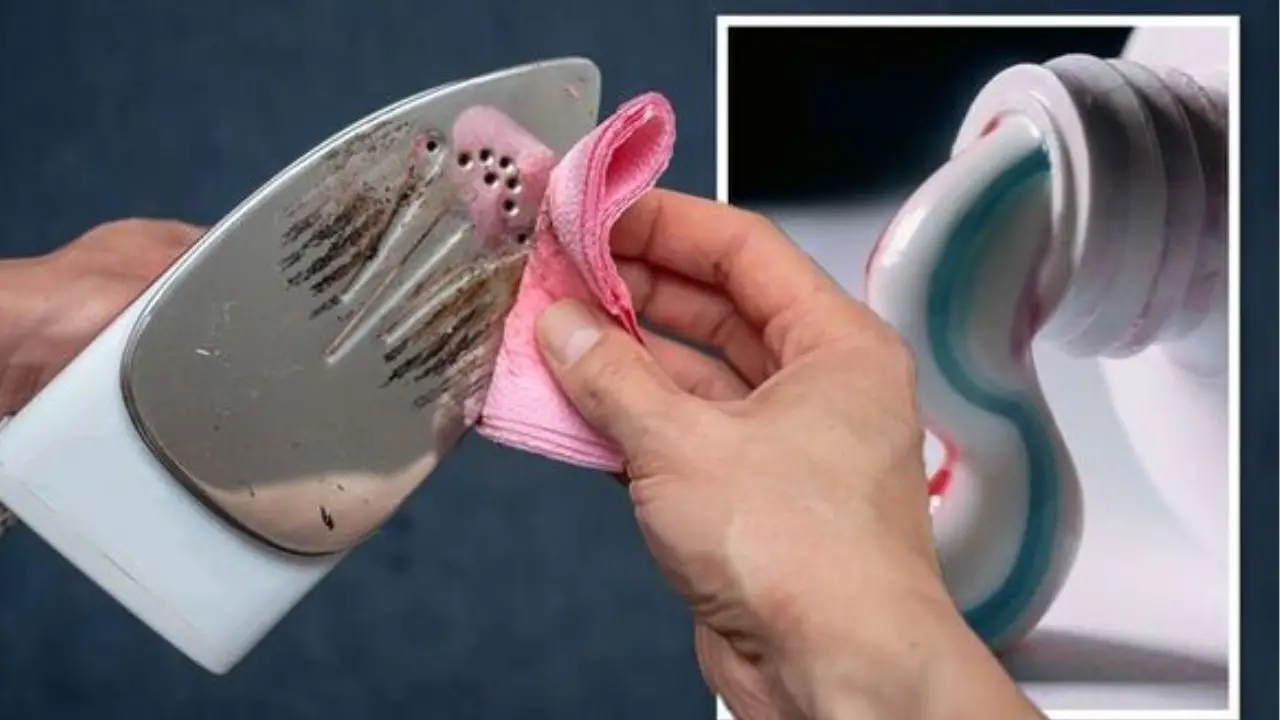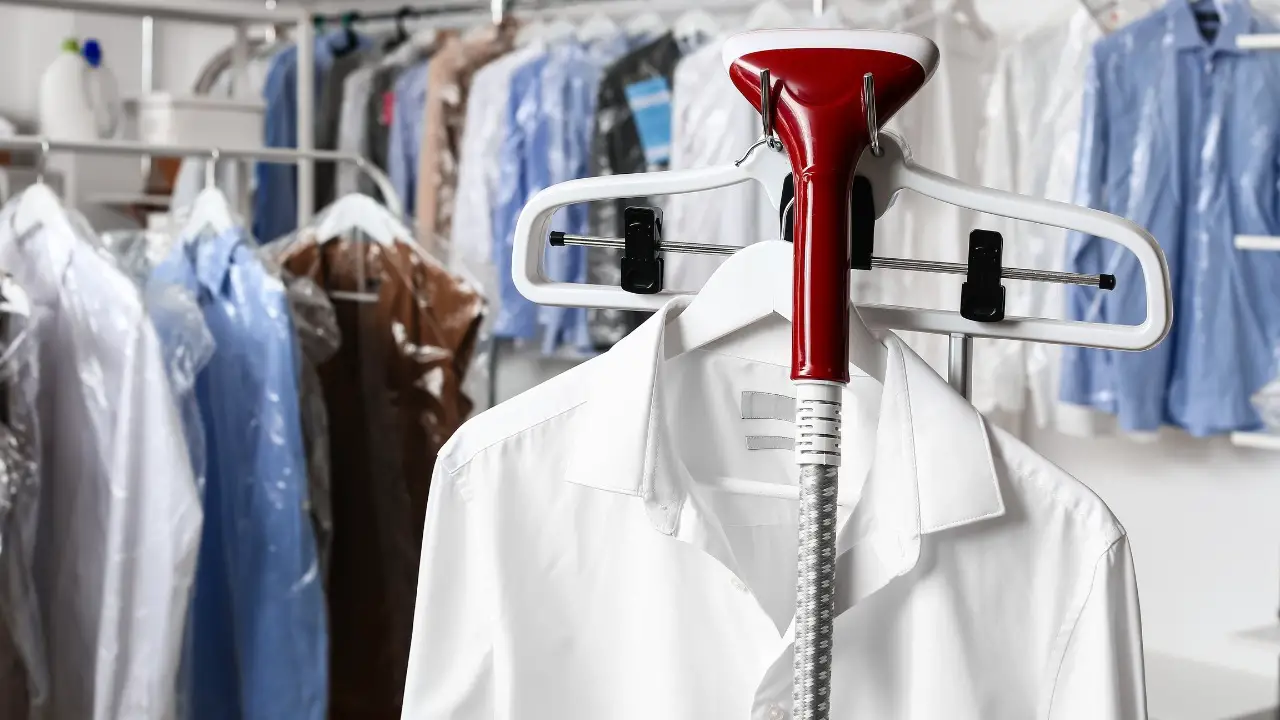Garment Steamer How to Use
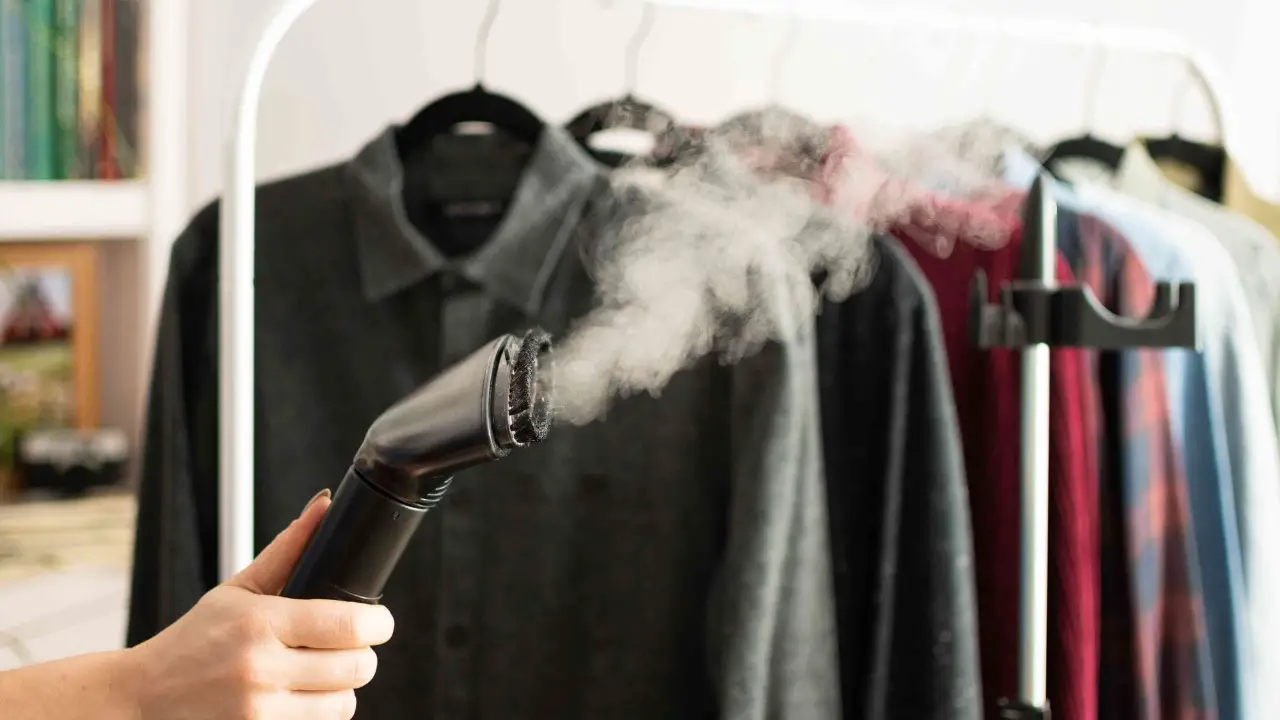
To use a garment steamer, fill the water tank, turn it on, and wait for it to heat up before passing it over wrinkled clothing. Using a garment steamer is a simple process that can save time and effort when ironing clothes.
It is an effective way to remove wrinkles from various fabrics, making it a versatile tool for maintaining a professional and well-groomed appearance. Garment steamers are convenient, easy to use, and provide efficient wrinkle removal for clothing, drapes, and upholstery.
They are especially useful for delicate fabrics that may be damaged by traditional ironing. With the right technique and a bit of practice, anyone can achieve wrinkle-free clothing with a garment steamer. This article will cover the step-by-step process for using a garment steamer effectively, as well as tips for achieving the best results.
Understanding Garment Steamer Basics
How Does A Garment Steamer Work?
A garment steamer is a revolutionary appliance that is designed to effortlessly remove wrinkles and freshen up clothing items. It operates by heating water to produce steam, which is then directed through a nozzle onto the fabric, effectively relaxing the fibers and smoothing out wrinkles. Unlike traditional irons, garment steamers do not require direct contact with the fabric, making them a gentler and more convenient option for delicate garments.
Types Of Garment Steamers To Choose From
When looking to invest in a garment steamer, it’s essential to understand the different types available to make an informed decision. There are several types of garment steamers, including handheld steamers, standing garment steamers, and travel-sized steamers, each catered to specific needs and preferences. Handheld steamers are perfect for quick touch-ups while standing garment steamers are ideal for handling larger items such as curtains or suits. On the other hand, travel-sized steamers are compact and portable, making them convenient for on-the-go use.
Preparing Your Garment For Steaming
When it comes to using a garment steamer, preparing your garment for steaming is crucial to achieving the best results. Properly preparing your garment can ensure that wrinkles are efficiently eliminated and the fabric is not damaged during the steaming process. In this section, we will cover the steps for preparing your garment for steaming, including selecting appropriate fabrics and the necessary preparations.
Selecting Appropriate Fabrics
Before using a garment steamer, it’s important to understand which fabrics are suitable for steaming. Certain fabrics such as silk, wool, and synthetics are ideal for steaming as they respond well to gentle heat and moisture. However, fabrics like suede, leather, and delicate embellishments should be avoided as they can be damaged by the steam. Always refer to the garment’s care label to ensure it is safe for steaming.
Preparing The Garment For Steaming
Once you’ve identified the suitable fabrics, it’s time to prepare the garment for steaming. Here are the essential steps to ensure your garment is ready for the steaming process:
- Inspect the garment: Before steaming, carefully check the garment for any stubborn wrinkles, stains, or areas that may require special attention.
- Hang the garment: Hang the garment on a suitable hanger to allow for easy access and smooth steaming. Ensure there is enough space around the garment to maneuver the steamer without any obstructions.
- Fill the steamer: Fill the garment steamer with water according to the manufacturer’s instructions. Some steamers may require distilled water to prevent mineral buildup.
- Power up the steamer: Turn on the garment steamer and allow it to heat up to the appropriate temperature. Consult the user manual for recommended heat settings based on the fabric type.
- Pre-treat stubborn wrinkles: For tough wrinkles, consider using a fabric-safe wrinkle release spray or gently stretching the fabric before steaming.
By following these steps, you can effectively prepare your garment for steaming, ensuring optimal results without causing any damage to the fabric.
Using Your Garment Steamer Effectively
Garment steamers are a convenient and efficient way to remove wrinkles from your clothes with ease. To make the most of your garment steamer, it’s important to understand how to operate it and use specific techniques for different types of wrinkles. Below, we’ll explore some useful tips to help you effectively use your garment steamer and achieve wrinkle-free clothes.
Operating The Garment Steamer
When operating your garment steamer, it’s essential to follow the manufacturer’s instructions for optimal performance. Typically, you’ll need to fill the water tank, plug in the steamer, and wait for it to heat up. Once ready, hold the steamer upright and gently glide it over your garment, allowing the steam to penetrate the fabric and release the wrinkles. For more stubborn wrinkles, you may need to hold the steamer in place for a few seconds.
Techniques For Removing Different Types Of Wrinkles
- Cotton and Linen: For heavy wrinkles on cotton and linen fabrics, hover the steamer nozzle 1-2 inches away from the fabric and slowly move it across the wrinkle, allowing the steam to relax the fibers.
- Silk and Delicate Fabrics: Use the steamer on a lower heat setting and hold it further away from the fabric to prevent damage. Gently steam the wrinkles without direct contact to avoid shiny spots.
- Pleats and Ruffles: To preserve the intricate details of pleated or ruffled garments, use a steam head attachment with a wider surface area to distribute the steam evenly.
Mastering Advanced Tips And Tricks
Steaming Delicate Fabrics
When using a garment steamer on delicate fabrics, it’s crucial to adjust the steam intensity to prevent damage. Always start from the lowest steam setting and gradually increase it as needed. To protect fragile materials such as silk or lace, place a thin cotton cloth between the steamer and the fabric to act as a barrier. Moving the steamer in a sweeping motion, rather than holding it in one spot, will help distribute the steam evenly, reducing the risk of heat damage. For intricate details, use the steam nozzle to get into hard-to-reach areas.
Removing Stubborn Wrinkles
For stubborn wrinkles, fill the water tank with distilled water to prevent mineral deposits that can clog the steamer. Glide the steamer slowly over the wrinkles, allowing the steam to penetrate the fabric. For extra tough wrinkles, hold the steamer at a closer distance and apply short bursts of steam. If the garment has layers or thick fabric, pull gently on the fabric as you steam to help release the wrinkles more effectively.
Maintaining And Storing Your Garment Steamer
Proper maintenance and storage of your garment steamer are essential to ensure its longevity and optimal performance. By following the right practices, you can extend the life of your steamer while keeping it in top condition for convenient use whenever needed.
Cleaning And Maintenance
Regular cleaning and maintenance are crucial to keep your garment steamer functioning efficiently. Here are some steps to follow:
- Always unplug the steamer before cleaning it to prevent any accidents.
- Empty the water tank and remove any remaining water to avoid mold and mineral buildup.
- Use a mixture of vinegar and water to descale the steamer’s heating element, as mineral deposits can affect its performance.
- Wipe the exterior of the steamer with a soft cloth and mild detergent to keep it free from dirt and dust.
- Inspect the hose and attachments for any blockages or debris and clean them as needed.
- Perform a deep cleaning of the steamer as recommended by the manufacturer to remove any stubborn buildup.
Proper Storage Practices
How you store your garment steamer can impact its longevity and effectiveness. Follow these tips for proper storage:
- Ensure the steamer is completely dry before storing it to prevent mold and mildew growth.
- Store the steamer in a cool, dry place away from direct sunlight to avoid any damage to its components.
- Wrap the cord around the steamer’s body or use a cord storage compartment if available to prevent tangling and damage.
- Use a cover or a dedicated storage bag to protect the steamer from dust and debris when not in use.
- Inspect the steamer periodically during storage to ensure there are no signs of damage or deterioration.
Frequently Asked Questions On Garment Steamer How To Use
How Do I Set Up A Garment Steamer?
To set up the garment steamer, fill the water tank, plug in the steamer, and turn it on. Allow it to heat up for a few minutes before using.
What Types Of Fabric Can Be Steamed?
Garment steamers can be used on a variety of fabrics, including delicate materials like silk and chiffon, as well as heavier fabrics like cotton and wool.
Can A Garment Steamer Remove Wrinkles Efficiently?
Yes, garment steamers are designed to effectively remove wrinkles from clothing, providing a convenient and efficient alternative to traditional ironing.
How do I fill the water reservoir of my garment steamer?
To fill the water reservoir, detach it from the steamer, open the cap, and use a jug or sink to pour distilled water into the tank until it reaches the recommended level. Avoid overfilling to prevent leaks.
Can I use tap water in my garment steamer?
It’s advisable to use distilled water to prevent mineral buildup in the steamer. However, if distilled water is unavailable, tap water can be used. In such cases, consider using a water filter to minimize mineral deposits.
How long does it take for the garment steamer to heat up?
Most garment steamers heat up within 1 to 2 minutes. Once you turn it on, wait until the indicator light signals that it’s ready for use. Patience during this phase ensures optimal steam production.
Can I use my garment steamer on all fabrics?
Garment steamers are generally safe for most fabrics, including delicate ones. However, always check the care label on your clothing items. Some materials may be sensitive to high heat, and using a steamer is not recommended for them.
How do I steam different types of clothing items?
Hang the garment on a hanger or place it on a flat surface. Pull the fabric taut with one hand and use the steamer with the other, moving it in an up-and-down or side-to-side motion. For more stubborn wrinkles, you can touch the steamer plate to the fabric.
Is it safe to steam delicate fabrics like silk or satin?
Yes, garment steamers are generally safe for delicate fabrics. However, it’s crucial to maintain a safe distance and not keep the steamer in one place for too long. Test on a small, inconspicuous area first to ensure compatibility.
How often should I clean my garment steamer?
Regular maintenance is essential for optimal performance. Empty the water reservoir after each use and clean it with a mixture of water and vinegar periodically to prevent mineral buildup. Refer to the user manual for specific cleaning instructions.
What should I do if my garment steamer isn’t producing steam?
Ensure that the water reservoir is filled, the unit is plugged in, and the heating element has had sufficient time to warm up. If issues persist, check for mineral deposits in the steamer’s nozzle and clean as needed. If problems persist, consult the user manual or contact customer support.
Can I use fragrance or fabric fresheners in the water reservoir?
It’s generally not recommended to add anything other than water to the reservoir, as fragrances or additives might damage the steamer or leave residues. If you desire a pleasant scent, consider using a fabric spray after steaming.
How do I store my garment steamer when not in use?
After use, allow the steamer to cool down, empty the water reservoir, and store it in an upright position. This helps prevent water leakage and ensures the longevity of your steamer. Keep it in a dry place to avoid any potential damage.
Can a garment steamer replace ironing?
While garment steamers are excellent for removing wrinkles, they may not provide the crispness achieved with ironing. For a polished look, especially on dress shirts or formal attire, steaming and ironing may be the most effective approach.
Is it normal for water to drip from the steamer during use?
Occasional dripping may occur, especially if the water reservoir is overfilled. To minimize dripping, maintain the recommended water level and allow the steamer to heat up adequately before use. If dripping persists, check for blockages in the steam nozzle.
Can I use my garment steamer to remove odors from clothing?
Yes, garment steamers can help eliminate odors by refreshing fabrics. Steam the garment thoroughly, and the heat will contribute to reducing unwanted smells. However, for strong odors, additional methods like washing or dry cleaning may be necessary.
What precautions should I take when using a garment steamer?
Avoid pointing the steamer directly at yourself or others to prevent burns. Keep your hands away from the steam and hot surfaces. When not in use, unplug the steamer and wait for it to cool down before storing it. Always follow the safety guidelines outlined in the user manual.
Conclusion
To sum up, using a garment steamer is a convenient and effective way to achieve wrinkle-free clothing. By following the simple steps and precautions outlined in this guide, you can make the most of your steamer and keep your wardrobe looking fresh and presentable with minimal effort.
Embracing the versatility and efficiency of a garment steamer can streamline your daily routine and help you maintain a polished appearance effortlessly.

